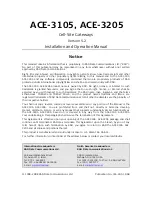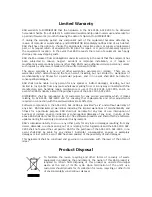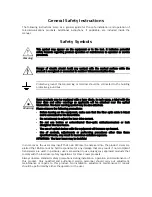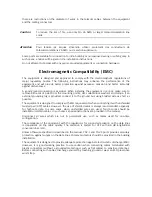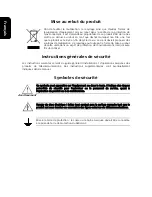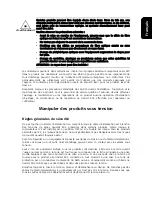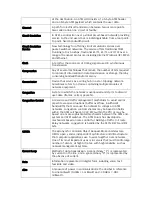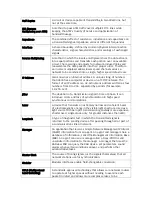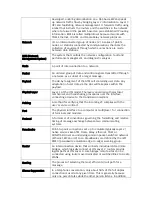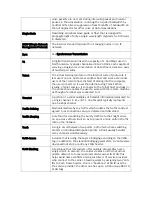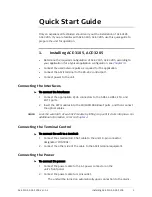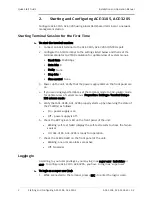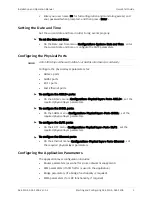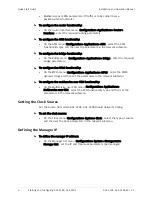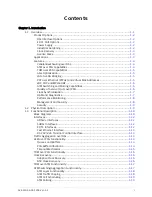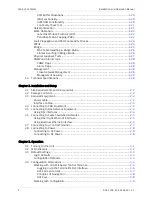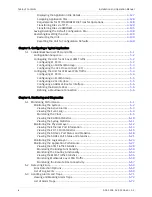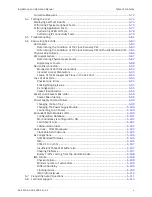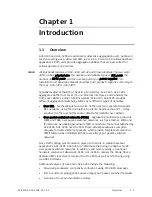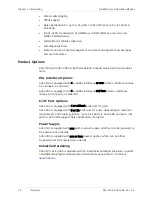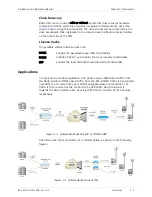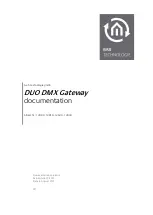
Half Duplex
A circuit or device capable of transmitting in two directions, but
not at the same time.
IMA (Inverse
Multiplexing over ATM)
A method to pass ATM traffic over multiple E1/T1 links while
keeping the ATM’s Quality of Service and optimization of
bandwidth usage.
Impedance
The combined effect of resistance, inductance and capacitance on
a transmitted signal. Impedance varies at different frequencies.
Interface
A shared boundary, defined by common physical interconnection
characteristics, signal characteristics, and meanings of exchanged
signals.
Inverse Multiplexing
A method in which the inverse multiplexer slices the data stream
into equal portions and transmits each portion over an available
circuit. The receiving end adjusts for network-induced delay and
reassembles the data packets into their proper order. Therefore,
an inverse multiplexer allows lower speed channels across a
network to be combined into a single, higher speed data stream.
IP Address
Also known as an Internet address. A unique string of numbers
that identifies a computer or device on a TCP/IP network. The
format of an IP address is a 32-bit numeric address written as four
numbers from 0 to 255, separated by periods (for example,
1.0.255.123).
Jitter
The deviation of a transmission signal in time or phase. It can
introduce errors and loss of synchronization in high speed
synchronous communications.
Laser
A device that transmits an extremely narrow and coherent beam
of electromagnetic energy in the visible light spectrum. Used as a
light source for fiber optic transmission (generally more expensive,
shorter lived, single mode only, for greater distances than LED).
Loopback
A type of diagnostic test in which the transmitted signal is
returned to the sending device after passing through all or part of
a communications link or network.
Manager
An application that receives Simple Network Management Protocol
(SNMP) information from an agent. An agent and manager share a
database of information, called the Management Information Base
(MIB). An agent can use a message called a traps-PDU to send
unsolicited information to the manager. A manager that uses the
RADview MIB can query the RAD device, set parameters, sound
alarms when certain conditions appear, and perform other
administrative tasks.
Master Clock
The source of timing signals (or the signals themselves) that all
network stations use for synchronization.
Modular
Modular interfaces enable field-changeable conversion.
MPLS (Multiprotocol
Label Switching)
A standards-approved technology that allows core network routers
to operate at higher speeds without needing to examine each
packet in detail, and allows more complex services to be


